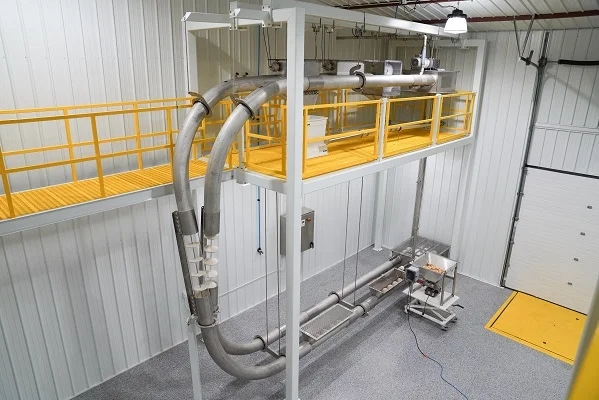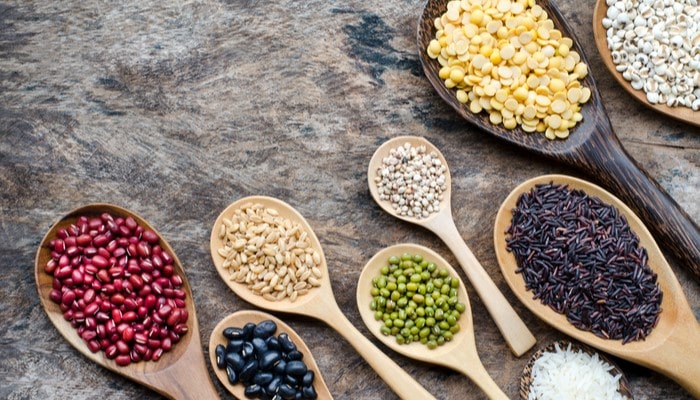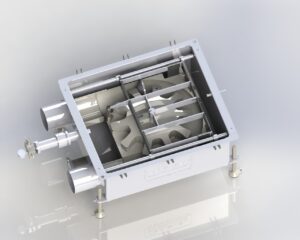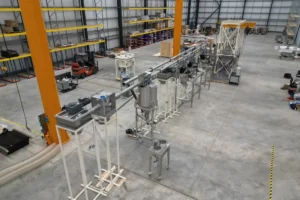Dry bean production goes through several processes before the final product is ready for the domestic or international market. Do you want to know the answer to how are dried beans processed and distributed? For dry bean producers, processing dried beans begins in a field – at the season’s end, bean plants are cut at their base and used only when they dry out. Learn more about this intricate process.
The most important part of bean processing is when a machine collects the pods and shakes the beans loose, which are bagged after being cleaned. Then, they are transported to the processing facility to be cleaned and processed into consumer or ingredient products – dry beans, bean flour, and canned bean products are all the result of bean processing.
What Are Processed Beans?
Processed beans are bean products created from dried beans. These edible beans require an additional step after conditioning has been completed, resulting in products like:
- Bagged dry beans,
- Bean pastes,
- Cereal products,
- Texturized analogs,
- Puffed snacks,
- Baked beans,
- Canned beans.
From the further conditioned dry beans, processing plants can make bean flour, rehydrated beans, and refried beans. As for dry packaged beans, they have been re-conditioned and packed into plastic bags or other types of bean containers for the retail market.
The beans received from farmers come directly from the combine and have about 4-8% foreign material, beans of varying color, and broken beans (on average). They are then transported to an elevator, which conditions them in preparation for processing and packaging. These are the beans that consumers need to soak in order to cook them.

How are Dried Beans Processed and Distributed Today? Let’s Start With Bean Conditioning Explanation
What does bean conditioning entail? This procedure involves eliminating damaged or discolored beans, rocks, and other unwanted contaminants. Ensuring bean consistency aids subsequent processing stages and facilitates water absorption before cooking.
What Equipment Is Used for Bean Conditioning?
Conditioning employs various techniques such as sieving, sifting, using color sorters, destoners, and gravity separators. Beans are differentiated based on color using a color sorter – a device that utilizes near-infrared mechanisms and visual technology to categorize beans based on their form and hue.
To eliminate cracked and split beans, as well as stones and other impurities, processing facilities employ tools like sieves, sifters, color sorters, destoners, and gravity separators. Integrating these purification techniques results in beans that are consistent in color and devoid of splits and breaks. Usually, the cracked and broken beans are repurposed into flours and pastes, whereas the undesired materials are thrown away.
Before being processed, conditioned beans undergo a thorough examination. For products meant to be cooked, the beans are cleaned, briefly boiled, and then put into containers with brine or a different sauce. These containers are then sealed and subjected to a canning, a method involving elevated temperatures and pressure. The end result is a ready-to-use, long-lasting product: canned beans.
How Do Manufacturers Prepare Bean Flour?
Manufacturers can use several methods for preparing bean flour, but there are two main approaches to it:
- The pre-cook method involves blanching and drying the beans before making them into flour.
- The grinding and heating method requires the beans to be first ground into flour and then to apply a proper heat treatment. This isn’t a pre-cooked flour but a raw variant that’s seldom used in the industry due to its potential flavor alteration after 3-4 months of storage. Bean flour can serve as a texture enhancer in items like pasta, baked goods, and tortilla chips and can also be transformed into snack and breakfast cereal.
What is the Extrusion Processing of Flour?
Bean flour is commonly used in extrusion processes. During extrusion, the flour undergoes high heat and pressure, enabling it to expand into diverse forms.
Firstly, the bean flour is combined with water and progresses through the extruder’s barrels. As it travels, the flour absorbs water, transforming into a doughy texture. It ultimately becomes malleable and is released through a die, which contributes to its shape.
While the doughy mixture advances within the extruder, internal pressure accumulates. This pressure is then relieved as the mixture exits through the die. Due to this reduction in pressure, the mixture expands, taking on the form of a snack item or puffed cereal.

Distribution of Dried Beans Through the Bean Plant
With a tubular drag conveyor, food processing plants get a modular system that can be built according to their needs and specifications. And because of the system’s ability to transport natural foods in a gentle and clean manner, it can handle different combinations, weights, and sizes of beans (as well as other materials).
For distributing beans throughout the bean processing facility (from the combine to the sealed package), plants used to rely on bucket elevators, drag chains, and pneumatic conveyors.
Using Efficient Conveyor Technologies
However, when it comes to keeping the product contamination-free and safe while reducing the risk of breakage, the tubular cable and disc automatic conveyor system has proven extremely effective. These automated conveyor systems are flexible enough to operate in the existing plant layout and can accommodate multiple inlets/outlets.
When dried beans arrive at the plant, the unloading and storage system is one of the most important operations. They need a flexible system that can handle bulk densities of about 50 pounds per cubic foot, as well as move them at a rate of 70,000 pounds per hour (e.g., Cablevey’s 8″ diameter tube conveyor system).
The beans are stored in silos, each with enough capacity to hold one or more truckloads of dried beans. Then, the beans are transported from silos to different hydration and canning process areas. The tubular drag conveyor system can be designed to fit your bean processing facility and move beans between multiple levels and in different directions.
On top of this, there is no need to monitor workers and unloads because modern conveyor solutions and conveyor engineering remove the need for manual unloading of materials.

Here’s What to Know About the Steps From Processing to Packaging
When about 2,000 lb. of polished, cleaned beans are dumped into a hopper (with a capacity of 5,000 lb.), beans fall through a sifter at the bottom of the hopper, where smaller and larger particles are removed as waste.
A tubular cable and disc conveyor will then carry the product to the packing line. The appropriate amount of beans is measured with a volumetric meter and then dumped into the bags. After bagging, the bags are conveyed over the checkweigher to make sure that each bag is accurately filled.
Cablevey Conveyors Offer Safe Bean Distribution
Conveyor manufacturing practices have delivered innovative tubular conveyor technology that replaces large pneumatic conveying systems once used in bean processing plants. Despite pneumatic conveyors being powerful and doing a great job at moving material, it breaks a certain percentage of beans in the process, which detracts from product appearance.
Most natural foods in their raw form require delicate handling – dry beans ideally should not be broken or distressed on their way from the combine or silos to packaging. The same applies to coffee beans, barley, kidney and garbanzo beans, rice and grain blends, parent seed, and oilseed.
Sanitation and Following Strict Schedules Is Paramount for Sustaining Production
Bean processing plants process and package bean products according to a strict schedule, and efficient product distribution and handling are essential to maintain production schedules. Also, a company manufacturing conveyor systems that are cutting-edge helps maintain system sanitation and prevent foreign matter from entering the tubes, virtually eliminating wasted products.
Any foreign material clinging to the disc and cable assembly can be continually removed during operation thanks to the bristles located in the brush box. When it comes to handling all types of bulk materials, most production plants use bucket elevators, which require extensive cleaning of conveyor belts (both on the interior and exterior), leading to production downtime.
With tubular drag conveyors, the cable-disc assembly turns around and passes a brush box for cleaning any residual material (immediately following the discharge) before going to the return circuit. In food production, speed, sanitation, and line changeover have become focal issues in food production – food producers are expected to maintain allergen-free and clean operations while increasing different product lines per shift each day.

Rely on Cablevey Conveyors and Our Automated Conveyor System
Whether you’re processing and moving pinto beans, black beans, red kidney beans, dry edible beans, bean crops, or bean grains, Cablevey Conveyors systems are a perfect fit for moving all types of food ingredients as well as finished products, regardless of the form they are in.
Besides reducing the incidence of health hazards, our tubular cable and disc conveyors also reduce the potential for dust explosions. Our tubular drag conveyors can be engineered to support any part of your production process, helping you maintain food quality standards, improve productivity and processes, and save on labor costs.
The list of conveying technologies is long, but not all of them are compatible with the bean industry. The food processing industry has recognized the benefits of tubular cable and disc conveyor systems. If you are ready to invest in a system for your bean processing plant, be sure to contact us at Cablevey Conveyors and receive info from our conveyor systems manufacturers and conveyor installation supervision services.






